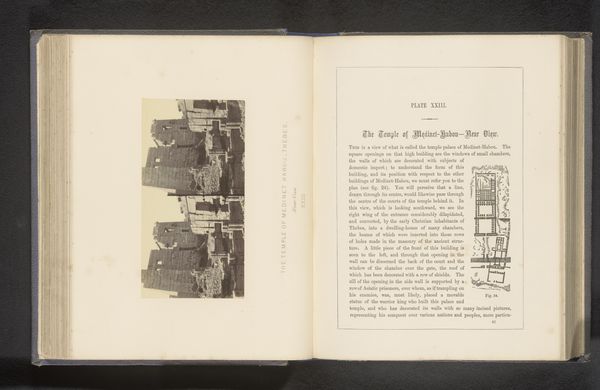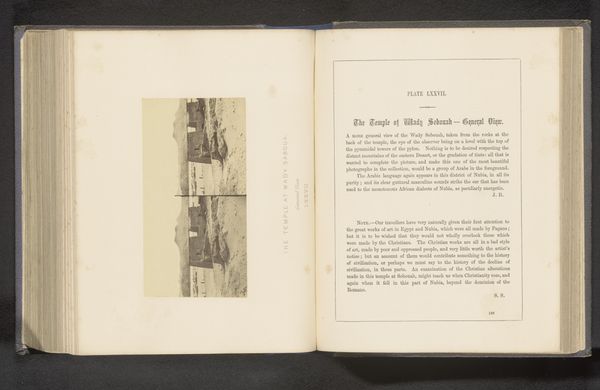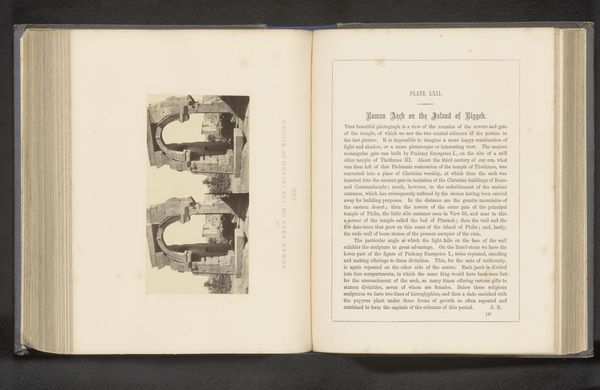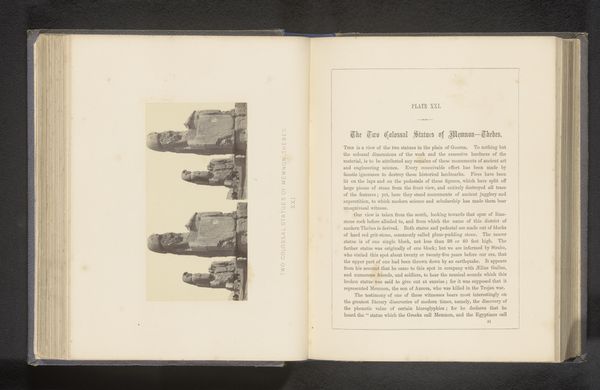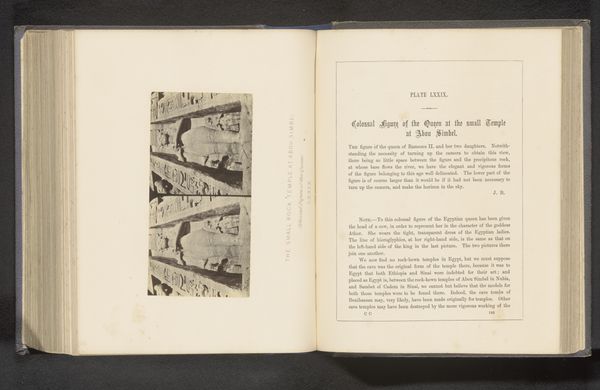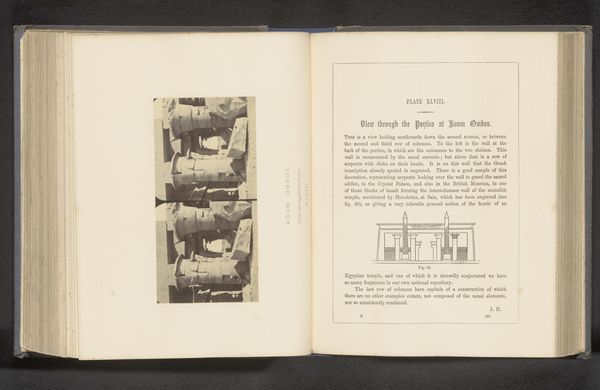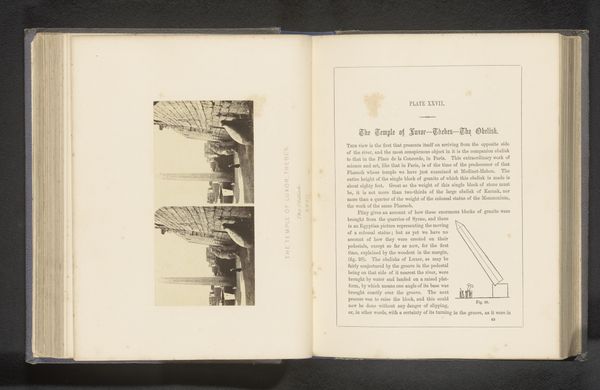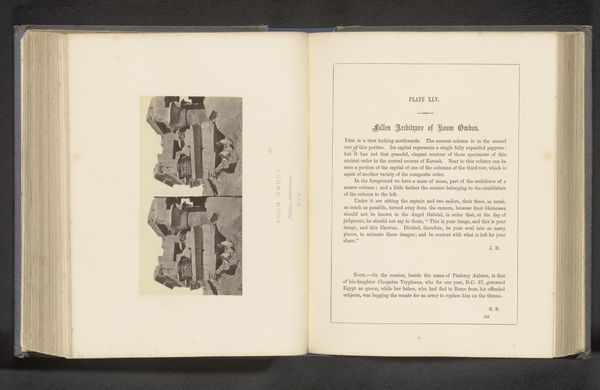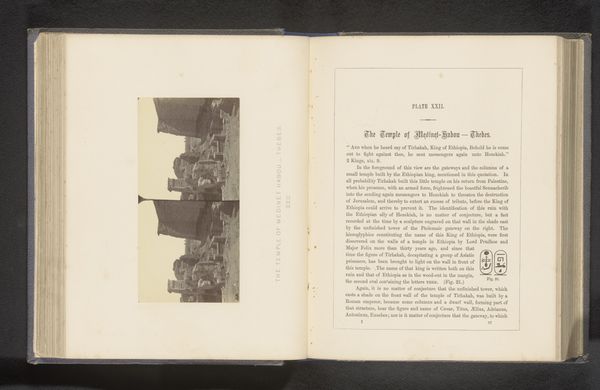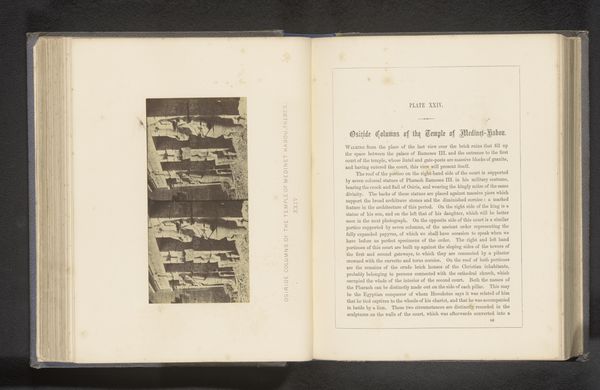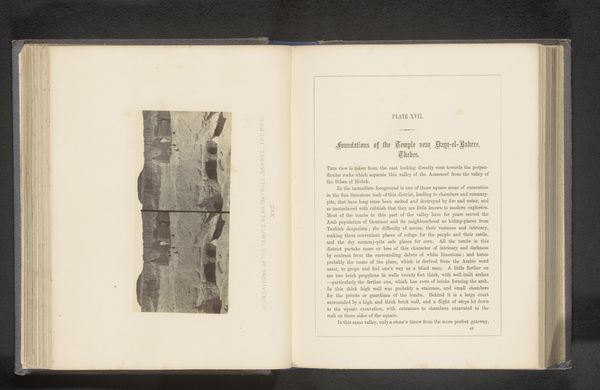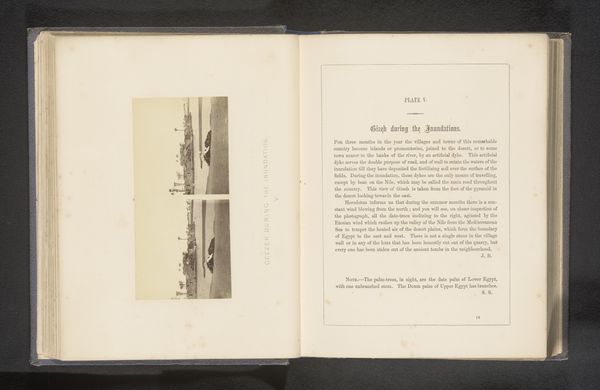
Onbekende man leunt tegen een fragment van een beeld, de kop van Ramses II before 1862
0:00
0:00
francisfrith
Rijksmuseum
print, photography, albumen-print
# print
#
book
#
landscape
#
ancient-egyptian-art
#
photography
#
ancient-mediterranean
#
albumen-print
Dimensions: height 72 mm, width 139 mm
Copyright: Rijks Museum: Open Domain
Editor: Here we have Francis Frith’s photograph, "Unknown Man Leaning Against a Fragment of a Statue, the Head of Ramses II," taken before 1862. It's an albumen print showcased in a book. What immediately strikes me is the juxtaposition of the anonymous man with the imposing, fragmented head of a pharaoh. What do you see in this piece? Curator: This image is an encounter with echoes of the past, quite literally. The very act of photographing ancient ruins during this period represents a reaching out, a desire to connect with something enduring. This head of Ramses II, a powerful symbol in itself, is being interacted with, almost leaned upon, by a contemporary figure. It sparks so many questions – who was this man? What did Ramses II signify to him? Editor: That’s a compelling question! So much is inferred by how the man interacts with the statue. Curator: Indeed. Notice how the figure’s pose doesn’t suggest reverence or awe but more a casual familiarity, which alters our relationship with this iconic visage. In some ways, the picture seems to strip away the pharaoh’s godly aura, which says as much about the era of the photograph as about Ancient Egypt. Are we meant to view this fallen monument with a different lens through the contemporary person's act of observation? Editor: So, it becomes a kind of meeting point between cultures and time periods, interpreted through symbolism and scale. The symbolism speaks of power, of history, and perhaps of mortality too. The scale is interesting – the colossal head reduced in size, within reach, contrasted with the contemporary individual who is dwarfed in history. It's an engaging interaction of elements. Curator: Precisely. By recognizing how time alters both our perceptions and our access to history, it offers an intimate look into humanity’s relationship with immortality, memory, and how a single photographic snapshot can hold those symbols. Editor: That’s really deepened my understanding. I'll certainly look at photographs of historical subjects differently now.
Comments
No comments
Be the first to comment and join the conversation on the ultimate creative platform.
